Ceramic Surface Decoration You Can Try at Home
Are you ready to unleash your inner artist? Decorating ceramics at home can be a thrilling and rewarding experience, allowing you to create stunning pieces that reflect your unique style. Whether you're a seasoned pro or a complete beginner, there's a world of techniques waiting for you to explore. Imagine transforming a plain ceramic mug into a vibrant work of art or giving a dull vase a splash of personality. With just a few tools and a bit of creativity, you can elevate your home decor or create heartfelt gifts for friends and family.
In this article, we'll dive into various ceramic decoration techniques that you can easily try at home. From understanding the different types of ceramics to mastering basic and advanced painting methods, you’ll find everything you need to get started on your artistic journey. So, grab your brushes, and let’s get our hands a little messy!
Before diving into decoration techniques, it's essential to understand the types of ceramics you'll be working with. Each type has its own unique characteristics and requires specific decoration methods. Here’s a quick overview:
| Ceramic Type | Characteristics | Best Decoration Techniques |
|---|---|---|
| Earthenware | Porous, often red or brown, low firing temperature | Painting, glazing, stenciling |
| Stoneware | Durable, non-porous, medium firing temperature | Painting, slip trailing, sgraffito |
| Porcelain | Translucent, very strong, high firing temperature | Painting, underglazing, fine detailing |
By understanding these differences, you can choose the right materials for your projects, ensuring that your decorations will adhere properly and look stunning.
Now that you know about the different ceramic types, it’s time to gather your tools and materials. Having the right supplies is crucial for achieving the best results in your ceramic decoration endeavors. Here’s what you’ll need:
- Brushes: Various sizes and shapes for different techniques.
- Glazes: A range of colors and finishes to enhance your pieces.
- Stencils: For creating precise designs.
- Sponges and Rags: For cleaning and blending.
- Protective Gear: Aprons and gloves to keep your workspace clean.
With these tools in hand, you’ll be well-equipped to start your ceramic decoration journey!
The type of brush you use can significantly affect your decoration technique. For instance, flat brushes are great for broad strokes, while fine-tipped brushes are perfect for intricate details. Experimenting with different brush types can help you discover which ones work best for your style. Don't be afraid to mix and match!
Glazes come in an array of finishes, from matte to glossy, and they can dramatically change the appearance of your ceramics. When selecting a glaze, consider the color, finish, and how it reacts during firing. Some glazes may change color or texture when heated, adding an element of surprise to your final piece!
Painting is one of the simplest and most enjoyable ways to decorate ceramics. With just a few strokes, you can add color and personality to your pieces. Here are a couple of techniques to get you started:
Stencils are a fantastic way to create intricate designs without the stress of freehand painting. Simply place the stencil on your ceramic surface, secure it, and apply paint over it. Once you remove the stencil, you’ll be left with a clean and professional-looking design. It's like magic!
If you prefer a more personal touch, freehand painting offers endless possibilities. Start with simple shapes and patterns, and gradually build your confidence. Remember, practice makes perfect! Don’t worry about making mistakes; they often lead to the most unique and beautiful results.
Once you've mastered the basics, it’s time to explore advanced techniques like sgraffito and slip trailing. These methods can take your ceramic pieces to the next level, adding depth and texture.
Sgraffito is a technique that involves scratching through a surface layer to reveal a contrasting color underneath. It’s perfect for creating stunning visual effects on your ceramics. To try it, apply a base layer of glaze, let it dry, and then use a sharp tool to scratch your design into the surface. The result? A beautiful, textured finish that will impress anyone!
Slip trailing involves applying a liquid clay mixture (slip) to create intricate designs and textures. Using a squeeze bottle, you can draw fine lines and patterns that add a unique touch to your ceramics. This technique is perfect for those who love to experiment with different textures and designs!
Q: Can I use regular paint on ceramics?
A: It’s best to use paints specifically designed for ceramics, as they will adhere better and withstand firing.
Q: Do I need to fire my ceramics after decorating?
A: Yes, firing is essential for setting the glaze and ensuring durability.
Q: What if I make a mistake while painting?
A: Don’t worry! Mistakes can often be covered up or turned into creative opportunities. Just embrace the process!
Ready to start your ceramic decoration adventure? Gather your materials, unleash your creativity, and let your artistic spirit shine!

Understanding Ceramic Types
When it comes to ceramic decoration, the first step is understanding the different types of ceramics available. Each type has its own unique characteristics, which can significantly influence the decoration techniques you choose. The three main types of ceramics are earthenware, stoneware, and porcelain. Knowing the differences between these materials will help you select the right one for your artistic projects.
Earthenware is often the most accessible type of ceramic for beginners. It is made from clay that is fired at relatively low temperatures, which gives it a porous structure. This means that earthenware is excellent for absorbing glazes, allowing for vibrant colors and creative designs. However, because it is not as strong as other types, it is best suited for decorative items rather than functional dinnerware. Imagine it as the cozy, friendly neighbor of the ceramic world—inviting and easy to work with!
Next up is stoneware, which is known for its durability and strength. Fired at higher temperatures than earthenware, stoneware is less porous and often has a more refined finish. This type of ceramic is perfect for functional items like mugs and plates, as it can withstand daily use and is generally dishwasher and microwave safe. Think of stoneware as the sturdy friend who can handle anything you throw at them—reliable and strong!
Finally, we have porcelain, the crème de la crème of ceramics. Porcelain is fired at extremely high temperatures, resulting in a dense and non-porous material. It is known for its delicate appearance and translucency, often associated with fine china. While it can be more challenging to work with due to its demanding firing requirements, the results can be breathtaking. Picture porcelain as the sophisticated, elegant friend who brings a touch of class to any gathering.
In summary, understanding the types of ceramics and their properties can greatly enhance your decoration projects. Here’s a quick comparison to help you visualize:
| Ceramic Type | Firing Temperature | Porosity | Common Uses |
|---|---|---|---|
| Earthenware | Low | Porous | Decorative items |
| Stoneware | Medium | Less porous | Functional items |
| Porcelain | High | Non-porous | Fine china |
By understanding these ceramic types, you can make informed decisions about which materials to use for your projects. Each type offers unique opportunities for creativity, so don’t be afraid to experiment and find what works best for you!

Essential Tools and Materials
When diving into the world of ceramic surface decoration, having the right tools and materials is like having a well-stocked kitchen before cooking a gourmet meal. You wouldn't want to start baking a cake without flour, right? Similarly, your ceramic projects will flourish with the right supplies at your fingertips. Let's break down what you'll need to get started on your artistic journey.
First and foremost, you'll need a variety of brushes. Each brush serves a different purpose, and choosing the right one can make a world of difference in the final outcome of your piece. For detailed work, fine-tipped brushes are essential, while flat brushes are perfect for broader strokes and coverage. Don't forget about fan brushes for texture and blending! The quality of your brushes can significantly impact your decoration, so investing in a few good ones is wise.
Next up is the glaze. This magical substance not only adds color but also seals and protects your ceramic pieces. There are various types of glazes available, including matte, glossy, and transparent finishes. Understanding the difference between these can help you choose the right glaze for your desired look. For instance, if you're aiming for a vibrant, shiny finish, a glossy glaze will do the trick, while a matte glaze can offer a more subdued, elegant appearance.
Now, let's talk about tools. In addition to brushes and glazes, you'll need some essential tools to aid your decorating process:
- Sponge: Great for blending colors and cleaning up excess glaze.
- Palette: To mix your paints and glazes without making a mess.
- Spray Bottle: Perfect for adding moisture to your clay if it starts to dry out during decoration.
- Stencils: For those intricate designs you want to replicate with ease.
Lastly, don't overlook safety equipment. While ceramics can be a fun and engaging hobby, some materials can be hazardous if not handled properly. Always wear gloves when working with glazes and keep your workspace well-ventilated. A simple dust mask can protect you from inhaling particles, especially when sanding or working with powdered materials.
In summary, having a well-rounded selection of tools and materials will set the stage for your ceramic decoration success. Think of it as gathering your ingredients before embarking on a culinary adventure. With brushes, glazes, and the right tools in hand, you're ready to unleash your creativity and make stunning ceramic pieces that reflect your personal style!
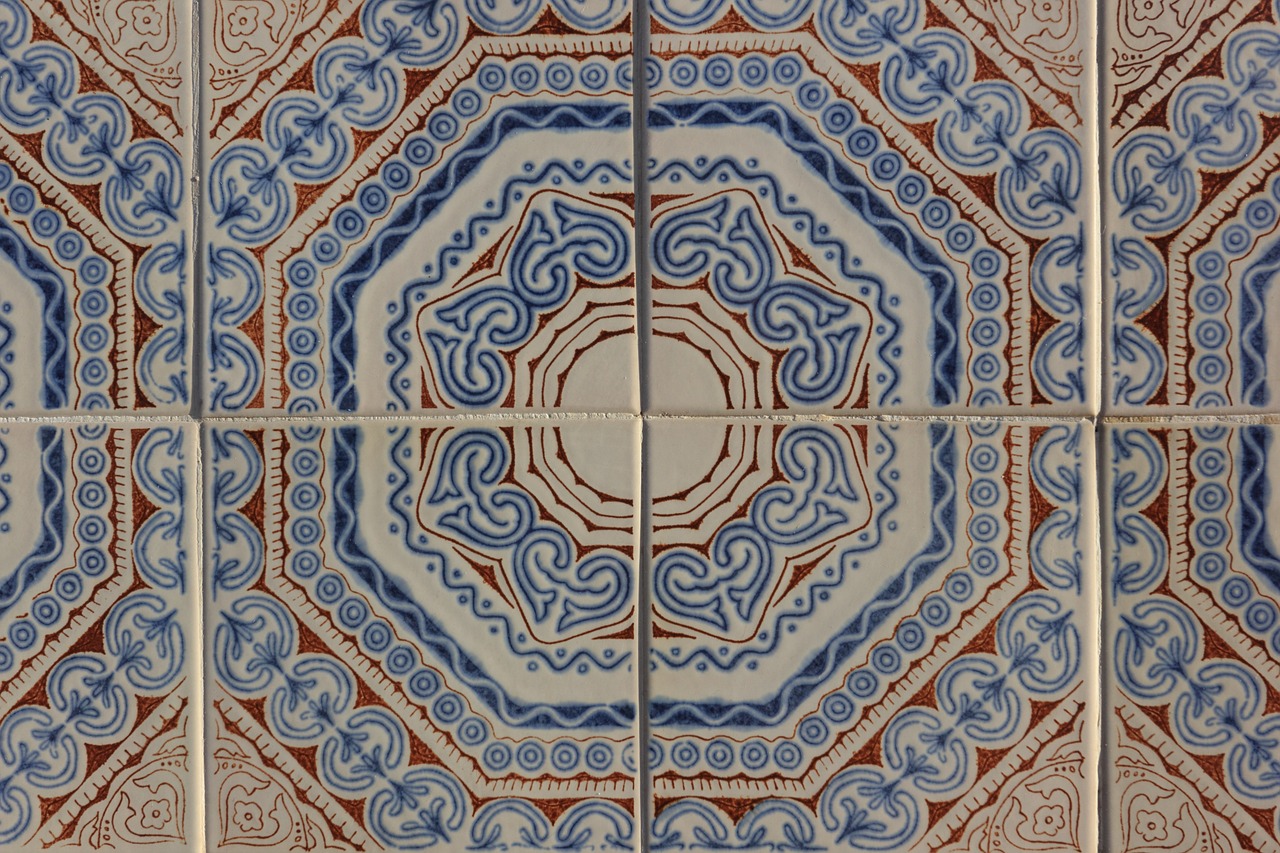
Choosing the Right Brushes
When it comes to decorating ceramics, choosing the right brushes can make all the difference in achieving the desired effect. Different brushes serve different purposes, and understanding these nuances can elevate your artistic game. Imagine trying to paint a delicate flower with a broad brush; it would be like using a sledgehammer to crack a nut—ineffective and messy! So, let’s dive into the world of brushes and find out which ones are your best friends in ceramic decoration.
First off, there are several types of brushes available, each designed for specific tasks. For instance, round brushes are fantastic for detailed work and fine lines, while flat brushes are ideal for covering larger areas. If you’re looking to create soft edges or gradients, a filbert brush is your go-to. And don’t forget about fan brushes, which are perfect for texture and foliage effects. Each brush type can help you express your creativity in unique ways.
To simplify your decision-making process, here’s a quick overview of common brush types and their uses:
| Brush Type | Best For |
|---|---|
| Round Brush | Detail work and fine lines |
| Flat Brush | Covering large areas |
| Filbert Brush | Soft edges and blending |
| Fan Brush | Creating textures and patterns |
Now, don’t just grab any brush off the shelf. Pay attention to the bristle type as well. Natural bristles, like those made from hog hair, are excellent for applying glazes and are more absorbent, allowing for smoother strokes. On the other hand, synthetic brushes are often more durable and can hold their shape better, making them a great choice for beginners who might not yet have the finesse to handle natural bristles. Think of it as choosing between a trusty old pair of sneakers and a brand-new pair—both have their advantages, but your comfort and style matter!
Another factor to consider is the size of the brush. Larger brushes can cover more area quickly, but they may not give you the precision you need for intricate designs. Conversely, tiny brushes can be great for detail but may take forever when you're trying to cover a big surface. It’s all about finding the right balance for your project. So, consider the scale of your work and choose accordingly. Remember, a well-chosen brush can transform your ceramic piece from ordinary to extraordinary!
Lastly, don't forget to maintain your brushes. Cleaning them properly after each use will prolong their life and keep them performing at their best. A brush that’s caked with dried paint is like a musician with a rusty instrument—it just won’t sound right! So, rinse your brushes thoroughly, reshape the bristles, and store them upright to avoid any damage.
In summary, choosing the right brushes for your ceramic decoration projects is essential for achieving the best results. By understanding the different types of brushes, bristle materials, sizes, and proper maintenance, you can enhance your artistic expression and create stunning ceramic pieces that reflect your unique style. So, go ahead, explore the world of brushes, and let your creativity flow!
- What type of brush is best for beginners? Synthetic flat brushes are often recommended for beginners due to their durability and ease of use.
- How do I clean my brushes after use? Rinse them with water immediately after use, use soap if necessary, reshape the bristles, and store them upright.
- Can I use regular paint brushes for ceramics? While you can, it's better to use brushes specifically designed for ceramics to achieve the best results.
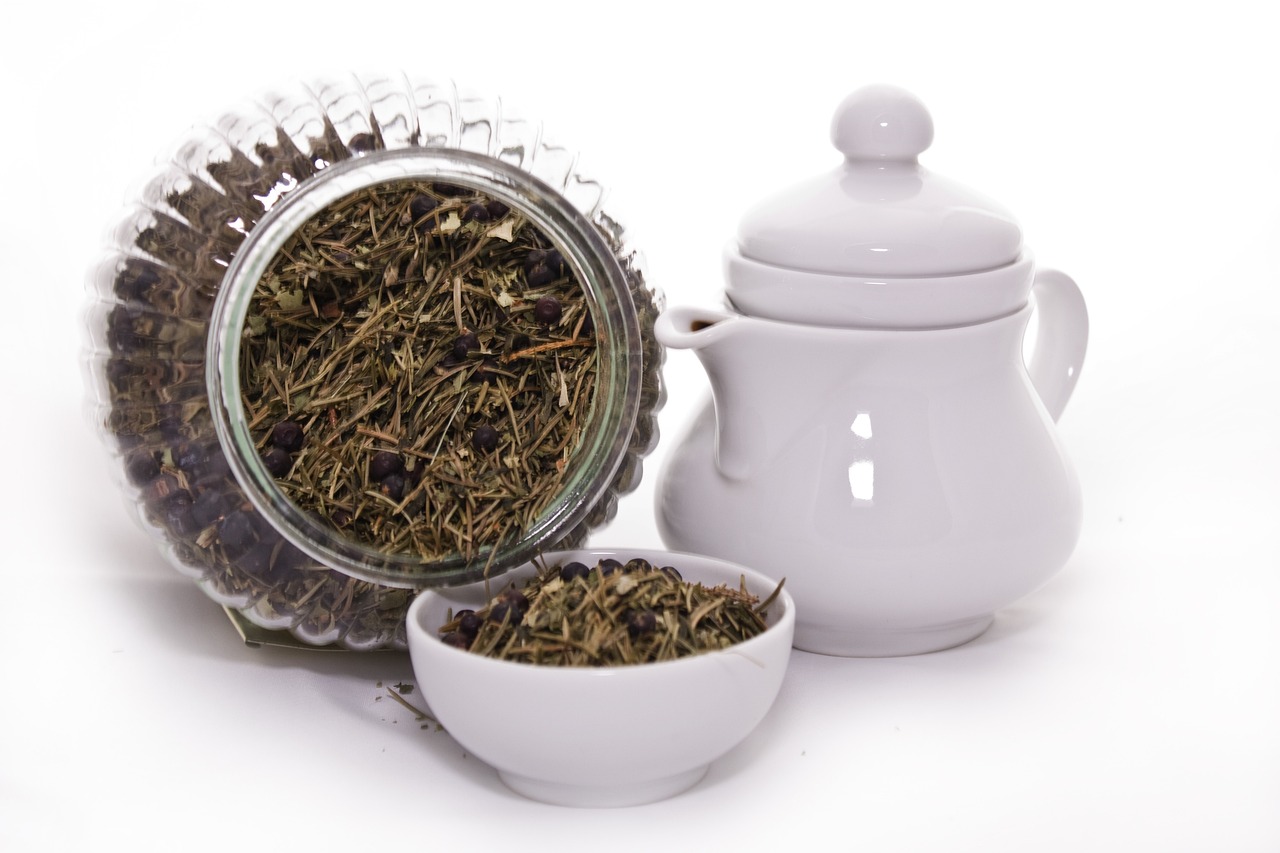
Selecting Appropriate Glazes
Choosing the right glaze for your ceramic project is crucial, as it not only affects the aesthetic appeal but also the durability and functionality of the piece. With a myriad of options available, it can feel overwhelming to decide which glaze to use. First, you should consider the type of ceramic you are working with, as different ceramics respond uniquely to various glazes. For instance, earthenware typically requires low-fire glazes, while stoneware and porcelain can handle high-fire glazes. This fundamental understanding will guide you in selecting a glaze that complements your material.
Next, think about the finish you desire. Glazes come in a variety of finishes, including glossy, matte, and satin. Each finish can dramatically alter the appearance of your ceramic piece. For example, a glossy glaze can enhance colors and create a vibrant look, while a matte finish can provide a more subdued, earthy feel. Additionally, you might want to consider how the glaze interacts with light. A well-chosen glaze can reflect light beautifully, adding depth and interest to your work.
Moreover, color selection is another vital aspect. When picking a color, consider the overall theme of your project. Are you going for a bold statement piece or something more subtle? You might want to create a color palette that harmonizes with your home decor or personal style. Remember, colors can also change during the firing process, so it’s beneficial to test a small sample before committing to a large batch.
To help you navigate this selection process, here are some important factors to keep in mind:
- Type of Ceramic: Match the glaze to the ceramic type for optimal results.
- Finish: Decide between glossy, matte, or satin based on your desired look.
- Color: Choose colors that resonate with your theme and test samples if possible.
- Food Safety: If your ceramic will be used for food, ensure the glaze is food-safe and non-toxic.
Lastly, don't hesitate to experiment! Mixing glazes can lead to unique and unexpected results, providing an opportunity to create truly one-of-a-kind pieces. Keep a journal of your glaze combinations and their outcomes, as this will serve as a valuable reference for future projects. In the world of ceramic decoration, the possibilities are endless, and each glaze can tell a different story. So, roll up your sleeves, grab your brushes, and let your creativity flow as you select the perfect glaze for your next ceramic masterpiece!
Q: What is the difference between low-fire and high-fire glazes?
A: Low-fire glazes are typically used for earthenware and are fired at lower temperatures, resulting in vibrant colors. High-fire glazes, used for stoneware and porcelain, are fired at higher temperatures and tend to produce more muted colors but are often more durable.
Q: Can I mix different glazes together?
A: Yes! Mixing glazes can create unique colors and effects. However, it's essential to test your mixtures on small pieces first to see how they react during firing.
Q: Are all glazes food-safe?
A: No, not all glazes are food-safe. Always check the label or product specifications to ensure that the glaze is suitable for food contact, especially if you're making functional ware.
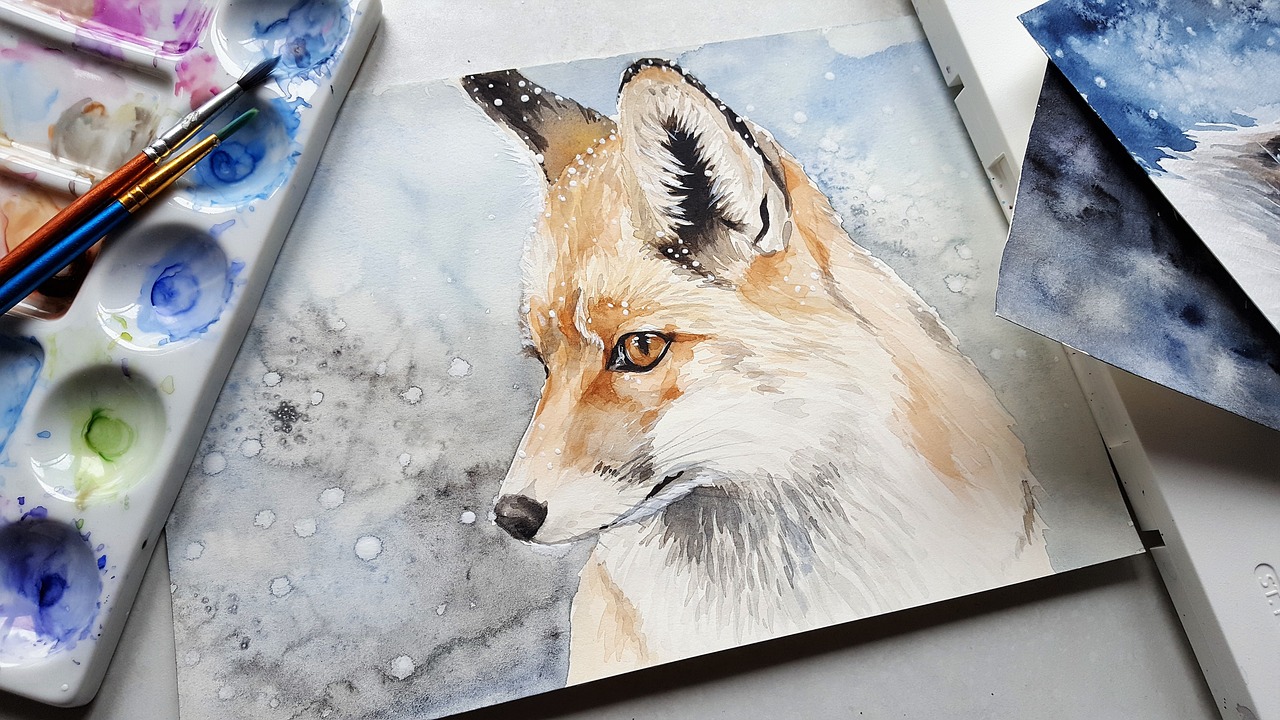
Basic Painting Techniques
When it comes to decorating ceramics, painting is often the first technique that comes to mind, and for good reason! It's not only accessible but also allows for a wide range of creative expression. Whether you're a beginner or have some experience under your belt, mastering basic painting techniques can significantly enhance the beauty of your ceramic pieces. Think of painting as the foundation of your artistic journey; it's where your creativity can truly take flight.
One of the simplest yet most effective techniques is to use acrylic paints. These paints are versatile, quick-drying, and come in a plethora of colors. They are perfect for beginners because they are easy to work with and can be thinned with water for a more subtle effect. Just imagine transforming a plain white mug into a vibrant masterpiece with just a few strokes! But remember, the key is to apply thin layers rather than thick ones. This not only ensures a smoother finish but also helps in achieving the desired opacity.
Another technique to consider is the use of underglazes. These are specially formulated paints that are applied to greenware or bisque-fired ceramics before the final glaze is added. Underglazes allow for intricate designs and patterns, as they can be layered and combined to create unique effects. They are particularly useful for those who want to add fine details or multiple colors without worrying about them running together during the glazing process. Imagine painting a delicate floral design that pops against a glossy finish—now that’s eye-catching!
For those who enjoy a bit of texture, sponging is a fun technique to try. By using a natural sea sponge, you can create beautiful, organic patterns on your ceramics. Simply dip the sponge into your chosen paint color and dab it onto the surface. This method not only adds depth but also a tactile quality to your work. You can even combine sponging with other techniques for a more complex look. Consider how a simple bowl can become a stunning centerpiece with just a little texture!
Of course, no painting discussion would be complete without mentioning stencils. These handy tools can help you achieve precision and consistency in your designs. You can create your own stencils or purchase them from craft stores. The process is straightforward: place the stencil on your ceramic surface, secure it, and then paint over it with your chosen color. When you lift the stencil, you'll be left with a clean, crisp design that looks professionally done. It's like magic!
Lastly, don't forget about the importance of sealing your work. Once you're satisfied with your painted design, applying a clear glaze is essential for protecting your artwork and enhancing its durability. This step is crucial, especially if the items will be used for food or drink. A well-sealed piece not only looks fantastic but also stands the test of time, allowing your artistic expression to shine for years to come.
In summary, basic painting techniques can open up a world of possibilities for your ceramic projects. Whether you're using acrylic paints, underglazes, sponging, stencils, or sealing, each method offers a unique way to express your creativity. So, grab your brushes, unleash your imagination, and start transforming those plain ceramics into extraordinary works of art!
- What type of paint is best for ceramics? Acrylic paints are often recommended for beginners due to their versatility and ease of use.
- Can I use regular paint on ceramics? While regular paint can be used, it may not adhere well or be durable. It's best to use paints specifically designed for ceramics.
- Do I need to seal my painted ceramics? Yes, sealing with a clear glaze is important for protecting your artwork and ensuring its longevity.
- How do I clean my ceramic pieces after painting? Hand wash your painted ceramics with mild soap and water. Avoid abrasive cleaners to maintain the integrity of your design.

Using Stencils for Precision
When it comes to decorating ceramics, stencils are a game changer. They allow you to create intricate designs with precision that would be challenging to achieve freehand. Imagine having the ability to replicate your favorite patterns effortlessly on your ceramic pieces! Whether you're aiming for a delicate floral motif or a bold geometric design, stencils can help you execute your vision flawlessly.
To get started with stenciling, you'll need to gather a few essential supplies. First, choose your stencil material. You can opt for plastic stencils for durability or paper stencils for more temporary designs. Each has its pros and cons, but plastic stencils tend to hold up better over time, especially if you plan to use them repeatedly. Next, you'll need a good adhesive spray to keep the stencil in place while you work. This will prevent any paint from seeping underneath, ensuring a clean and sharp edge.
Once you have your materials ready, it's time to prepare your ceramic surface. Make sure it's clean and dry before applying the stencil. Position the stencil carefully, securing it with your adhesive spray. Now comes the fun part: applying paint! Use a stencil brush or a foam applicator to dab the paint onto the stencil. This technique allows you to control the amount of paint, preventing it from bleeding under the edges. Remember, less is more when it comes to paint application. You can always add more, but it's challenging to fix a design that's been over-saturated!
After you’ve applied your paint, gently lift the stencil away to reveal your design. The moment you see your creation come to life is truly rewarding! If you're feeling adventurous, consider layering multiple stencils for a more complex design. Just make sure each layer dries completely before applying the next one to avoid smudging.
For those who want to take their stenciling to the next level, consider using a variety of techniques. You can incorporate sponging or brushing to add texture to your stenciled patterns. Additionally, experimenting with different colors can create stunning visual effects. Don't hesitate to mix and match colors to see what works best for your piece!
Lastly, remember that practice makes perfect. Your first few attempts may not turn out exactly as you envisioned, but that's part of the learning process. Keep experimenting with different stencils and techniques, and soon you'll find your unique style. Stenciling can transform your ceramic projects into stunning works of art, making it a worthwhile skill to master!
- What type of paint should I use for stenciling on ceramics? It's best to use ceramic paints or acrylic paints specifically designed for ceramics. These paints are formulated to adhere well and withstand firing if you plan to glaze your pieces afterward.
- Can I reuse my stencils? Yes! If you clean them properly after each use, especially plastic stencils, they can last for many projects.
- How do I prevent paint bleeding under the stencil? Use a light touch when applying paint and make sure to secure the stencil well with adhesive. Dabbing rather than brushing can also help minimize bleeding.

Freehand Painting Tips
Freehand painting on ceramics is like dancing without a partner; it’s all about expressing yourself and embracing the creative flow. If you’re ready to unleash your inner artist, here are some tips to help you develop your style and improve your technique. First and foremost, choose the right space to work in. A well-lit, comfortable area can make all the difference in how you feel while painting. Set up a dedicated workspace where you can leave your materials out and return to them whenever inspiration strikes.
Next, consider the type of paint you will use. Ceramic paints come in various forms, including underglazes and overglazes. Each has its unique properties and application methods. For beginners, underglazes can be a fantastic choice as they allow for vibrant colors and easy layering. Remember, practice makes perfect! Start with simple designs and gradually work your way up to more complex patterns as you gain confidence.
One of the most exciting aspects of freehand painting is the freedom to experiment. Don’t be afraid to mix colors or try new techniques. For instance, you might want to blend two shades to create an ombre effect or use a sponge to dab on texture. It can also be helpful to keep a sketchbook handy for jotting down ideas or practicing strokes before applying them to your ceramics.
When it comes to brush techniques, the type and size of the brush you use can significantly impact your design. A fine brush is perfect for intricate details, while a broader brush can cover larger areas quickly. Here’s a quick overview of different brush types and their uses:
| Brush Type | Use |
|---|---|
| Round Brush | Great for detailed work and outlines. |
| Flat Brush | Ideal for filling in large areas and creating bold strokes. |
| Fan Brush | Perfect for texture and foliage effects. |
| Detail Brush | Best for fine lines and intricate designs. |
As you paint, remember to step back occasionally to assess your work from a distance. This can help you see how the colors and shapes interact, allowing you to make adjustments as needed. Additionally, don't shy away from using your fingers to smudge or blend colors directly on the ceramic; it can create beautiful, organic effects.
Finally, once you’ve completed your piece, allow it to dry thoroughly before firing it in the kiln, if applicable. This is crucial to ensure that your artwork is durable and long-lasting. Freehand painting on ceramics is not just about the end result; it’s about enjoying the process and embracing your creativity. So grab your brushes, let your imagination run wild, and create something that truly reflects who you are!
- What type of paint should I use for ceramics? Ceramic paints, including underglazes and overglazes, are recommended for best results.
- Can I use regular acrylic paint on ceramics? While it’s possible, regular acrylics may not adhere well or be as durable as ceramic-specific paints.
- How do I seal my painted ceramics? After firing, you can apply a clear glaze for extra protection and shine.
- Is it necessary to use a kiln for ceramic painting? If you want your designs to be permanent and food-safe, firing in a kiln is essential.
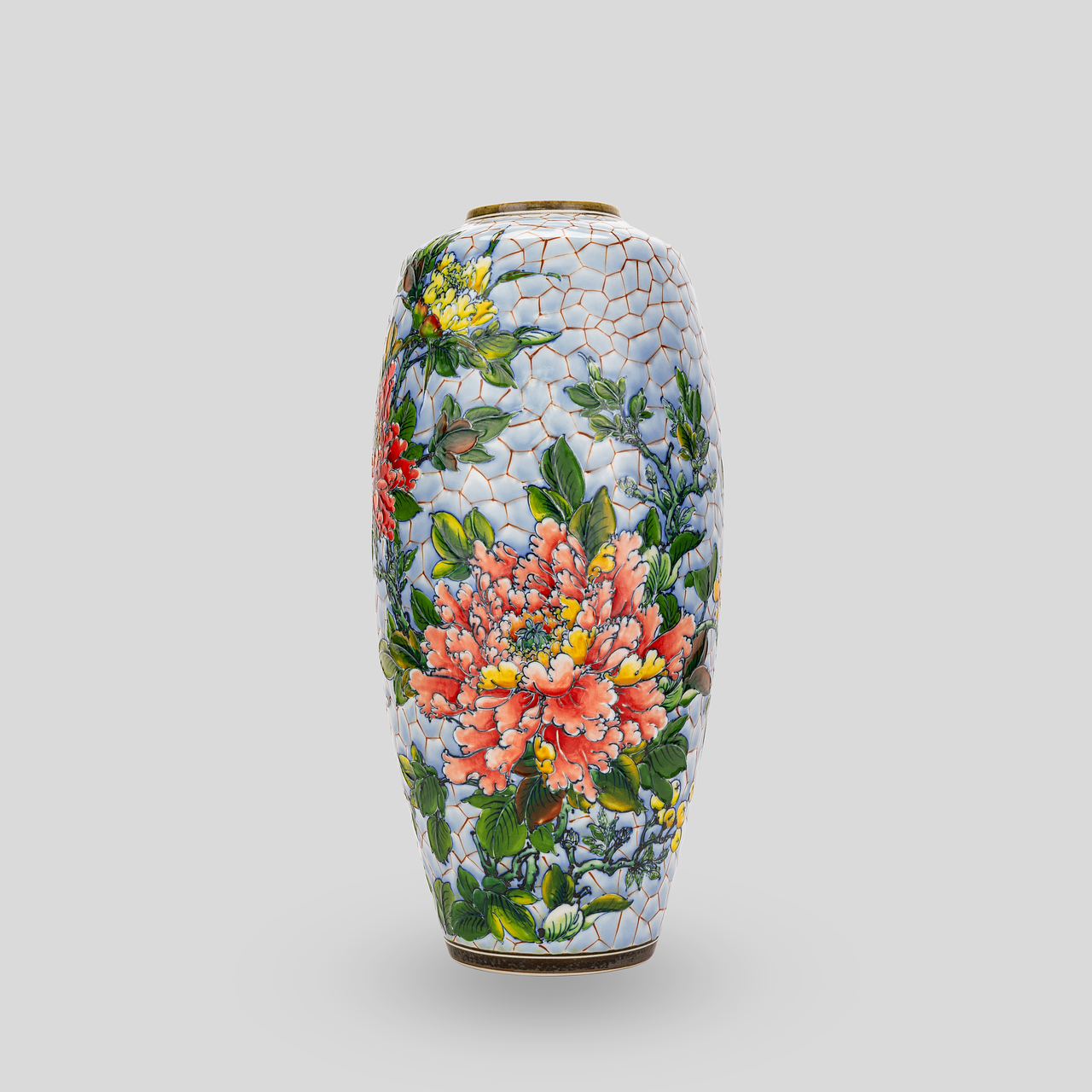
Advanced Decoration Techniques
Once you've mastered the basics of ceramic decoration, it's time to dive into the fascinating world of advanced techniques. These methods not only enhance the aesthetic appeal of your pieces but also allow you to express your creativity in ways that basic painting simply can't. Think of advanced decoration techniques as the secret spices that elevate a good dish to gourmet status. Two standout techniques in this realm are sgraffito and slip trailing, both of which can transform your ceramics into true works of art.
Sgraffito is a technique that involves scratching through a surface layer of clay to reveal a contrasting color underneath. Imagine carving your initials into a tree trunk; that’s similar to how sgraffito works, but instead of bark, you’re revealing beautiful, vibrant clay. To get started with sgraffito, you’ll need a piece of leather-hard clay, a sharp tool for scratching, and a contrasting slip or underglaze. The process is simple yet effective: apply your slip or underglaze to the surface, let it dry slightly, and then use your tool to carve out your design. The result? A stunning contrast that brings depth and texture to your ceramics.
On the other hand, slip trailing is another advanced technique that allows for intricate designs and textures. Slip trailing involves applying a liquid clay mixture (called slip) onto your ceramic piece using a trailing tool or a squeeze bottle. This technique is akin to icing a cake; the precision and control you have over the slip can create beautiful lines and patterns that add character to your work. To achieve the best results, you'll want to ensure your slip is the right consistency—think of it as the Goldilocks principle: not too thick, not too runny, but just right!
Here’s a quick comparison of both techniques to help you decide which one to try first:
| Technique | Description | Best For |
|---|---|---|
| Sgraffito | Scratching through a surface layer to reveal a contrasting color. | Creating depth and intricate designs. |
| Slip Trailing | Applying liquid clay through a trailing tool for detailed patterns. | Adding texture and fine details. |
Both techniques require practice, so don’t be discouraged if your first attempts aren’t perfect. Just like learning to ride a bike, it takes a few wobbles before you can glide smoothly. The key is to have fun and experiment! Remember, the beauty of art lies in its imperfections and the personal touch you bring to your creations.
As you explore these advanced techniques, consider incorporating elements from your personal experiences or inspirations. Perhaps you want to reflect your travels through patterns inspired by different cultures, or maybe you wish to convey a story through your designs. The possibilities are endless, and the only limit is your imagination!
- What is the best type of clay for advanced decoration techniques? Earthenware and stoneware are ideal for sgraffito and slip trailing due to their texture and ability to hold detail.
- Can I use regular paint for decorating ceramics? It's best to use ceramic-specific paints or glazes to ensure durability and proper adherence.
- How can I ensure my designs last? Always follow the proper firing and glazing techniques to seal your designs and enhance their longevity.
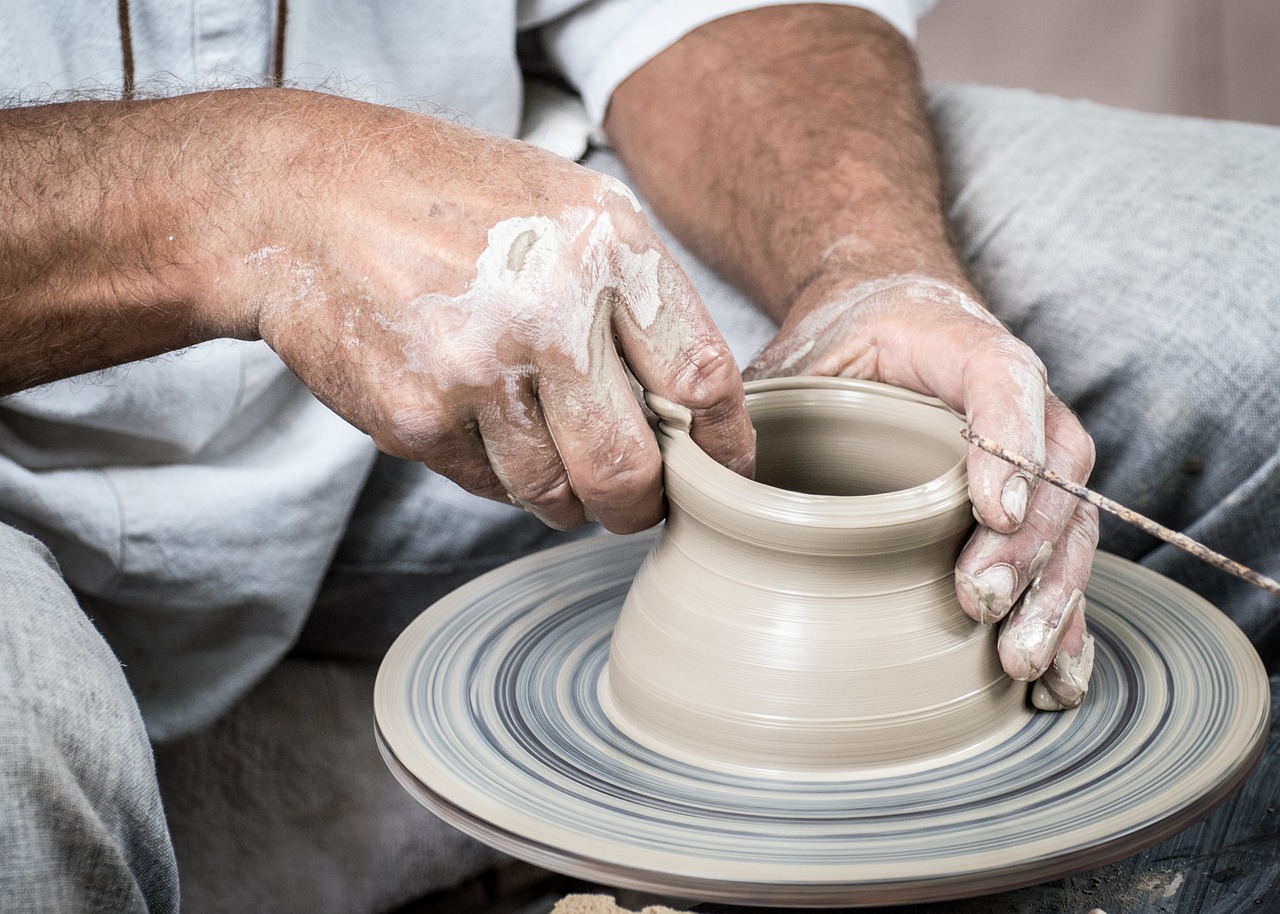
Sgraffito Explained
Sgraffito is a fascinating ceramic decoration technique that involves scratching through a surface layer to reveal a contrasting color beneath. Imagine peeling back the layers of an onion; as you remove each layer, different colors and textures emerge, creating a stunning visual effect. This method not only adds depth to your ceramic pieces but also allows for a unique artistic expression that can truly set your work apart from others.
To begin with sgraffito, you'll need a few essential materials. Start with a piece of leather-hard clay, which is firm enough to hold its shape but still soft enough to be carved into. You'll also need underglaze or colored slip, which will serve as the top layer that you will scratch into. The contrasting color underneath will be revealed as you carve your design. Think of it as a canvas waiting to be unveiled!
Here’s a simple step-by-step guide to help you get started with sgraffito:
- Prepare Your Clay: Shape your clay into the desired form, whether it’s a bowl, plate, or sculpture.
- Apply Underglaze: Once your piece is leather-hard, apply a layer of underglaze using a brush or sponge. Make sure it’s evenly coated.
- Design Your Pattern: Use a sharp tool or a wooden stick to carefully scratch your design into the underglaze. This is where your creativity can shine! You can create anything from simple lines to intricate patterns.
- Reveal the Contrast: As you scratch through the top layer, the color of the clay body underneath will emerge, creating a striking contrast.
- Firing: Once you’re satisfied with your design, fire your piece in a kiln to set the colors and finish the piece.
One of the best things about sgraffito is its versatility. You can use it for various styles, from geometric patterns to more organic, flowing designs. It’s like having a blank canvas where you can let your imagination run wild. Plus, the technique is forgiving; if you make a mistake, you can simply add more layers of underglaze and start again!
For those who are more visual learners, consider checking out tutorial videos online. Many artists share their sgraffito techniques, offering tips and tricks that can help you refine your skills quickly. The more you practice, the more you’ll develop your unique style, turning ordinary ceramics into extraordinary works of art.
In summary, sgraffito is not just a decoration technique; it’s a way to tell a story through your ceramics. Whether you’re creating pieces for yourself or gifts for loved ones, this method allows you to express your creativity in a way that’s both personal and visually stunning. So grab your tools, unleash your inner artist, and start exploring the beautiful world of sgraffito!
Q: Can I use sgraffito on any type of clay?
A: Sgraffito works best on leather-hard clay, which can be either earthenware, stoneware, or porcelain. Just make sure the clay is suitable for the type of underglaze you are using.
Q: Do I need special tools for sgraffito?
A: While you can use specialized carving tools, many people start with simple tools like a wooden stick or a needle tool. Experiment with what you have!
Q: Can I use sgraffito on glazed ceramics?
A: Sgraffito is typically done before the final glaze firing. However, you can try a similar technique on glazed pieces using specific tools and techniques, but results may vary.
Q: How do I ensure my design stays intact after firing?
A: Make sure to apply even pressure while scratching and avoid going too deep into the clay. Proper firing will also help set your design.

Slip Trailing Techniques
Slip trailing is a fascinating technique that allows artists to create intricate designs and textures on ceramic surfaces using a fluid clay mixture known as slip. This method not only enhances the aesthetic appeal of your ceramics but also adds a tactile dimension that can be quite captivating. Imagine transforming a plain bowl or plate into a stunning work of art that tells a story with every curve and line! The beauty of slip trailing lies in its versatility; you can achieve everything from delicate floral patterns to bold geometric designs.
To get started with slip trailing, you’ll need a few essential tools and materials. First, you’ll require a slip that is compatible with the clay body of your ceramics. The slip should be creamy and smooth, allowing it to flow easily through your applicator. The applicator itself can be as simple as a squeeze bottle or a more specialized tool designed specifically for slip trailing. Both options work well, but using a squeeze bottle gives you more control over the flow and pressure, making it easier to create fine lines and detailed patterns.
When it comes to applying the slip, the technique is all about practice and control. Begin by holding your applicator at a comfortable angle, usually about 45 degrees to the surface of the ceramic piece. As you squeeze the bottle, you’ll want to move your hand steadily to create continuous lines. It’s important to maintain a consistent speed; too fast, and you risk creating uneven lines, too slow, and the slip may not flow properly. Think of it like icing a cake—steady hands and a gentle squeeze will yield beautiful results!
Another exciting aspect of slip trailing is the ability to layer your designs. Once your first layer of slip has dried slightly, you can add additional colors or patterns on top, creating depth and complexity. For instance, you might start with a base layer of white slip and then add vibrant colors like blues and greens to create a stunning contrast. This layering technique not only enhances the visual appeal but also adds an element of surprise to your finished piece.
To help you visualize the process, here’s a simple table summarizing the essential steps in slip trailing:
| Step | Description |
|---|---|
| 1 | Prepare your slip by mixing it to a creamy consistency. |
| 2 | Fill your applicator with the slip, ensuring no air bubbles are present. |
| 3 | Hold the applicator at a 45-degree angle and begin applying the slip. |
| 4 | Layer additional colors once the first layer has dried slightly. |
| 5 | Allow your piece to dry completely before firing it in the kiln. |
In conclusion, slip trailing is not just a technique; it's a journey of creativity and expression. As you experiment with different designs and colors, you’ll find your unique style emerging. So, gather your materials, unleash your imagination, and let slip trailing take your ceramic art to new heights!
- What type of slip should I use for slip trailing? It's best to use a slip that matches the clay body of your ceramics for optimal adhesion and finish.
- Can I use colored slips for slip trailing? Absolutely! Colored slips can add vibrant designs and enhance the overall aesthetic of your pieces.
- How do I clean my applicator after use? Clean your applicator immediately after use with water to prevent the slip from hardening inside.
- Is slip trailing suitable for beginners? Yes! With a little practice, anyone can master slip trailing and create beautiful ceramic pieces.
Frequently Asked Questions
- What types of ceramics are best for decoration?
When it comes to ceramic decoration, you'll primarily encounter earthenware, stoneware, and porcelain. Earthenware is great for beginners due to its affordability and ease of use, while stoneware offers more durability, making it suitable for functional pieces. Porcelain, on the other hand, is perfect for fine art projects due to its smooth surface and elegant finish.
- What tools do I need to start decorating ceramics at home?
To kick off your ceramic decoration journey, gather essential tools like brushes, sponges, and palette knives. Don't forget to pick up some glazes! A variety of brushes will help you achieve different effects—flat brushes for broad strokes, round brushes for detail work, and fan brushes for texture. Having the right tools is crucial for achieving the best results.
- How can I choose the right glaze for my project?
Selecting the right glaze can be a game-changer for your ceramics. Consider the finish you want—matte, glossy, or satin—and choose colors that complement your design. Always check if the glaze is food-safe if you're decorating functional items. Testing glazes on small pieces can also help you see how they react after firing.
- What are some basic painting techniques for ceramics?
Basic painting techniques include using solid colors, layering, and blending. You can start with a solid base coat and then add designs or patterns. Layering different colors can create depth, while blending can give your piece a unique look. Don't hesitate to experiment; the beauty of art is in its imperfections!
- How do I use stencils effectively on ceramics?
Using stencils is a fantastic way to achieve precise designs. Secure your stencil to the ceramic surface with tape to prevent it from moving. Use a sponge or brush to apply paint, making sure to dab rather than swipe for cleaner lines. Once you're done, carefully lift the stencil to reveal your design. Practice makes perfect!
- What is sgraffito, and how do I do it?
Sgraffito is a technique where you scratch through a top layer of slip or glaze to reveal a contrasting color underneath. To try this, apply a layer of colored slip to your piece, let it dry slightly, and then use a tool to carve your design. This technique can create stunning visual effects and add depth to your ceramics.
- Can I use regular paint for decorating ceramics?
While you might be tempted to use regular paint, it's best to stick with ceramic-specific paints or glazes. Regular paint may not adhere well or could wash off in the dishwasher. Ceramic paints are formulated to withstand heat and moisture, ensuring your beautiful designs last longer.
- How can I improve my freehand painting skills?
Improving your freehand painting skills takes practice and patience. Start by sketching your design on paper before transferring it to your ceramic piece. Use light pencil marks to guide your brush strokes. Don't be afraid to make mistakes; each one is a learning opportunity that will help you develop your unique style!


















